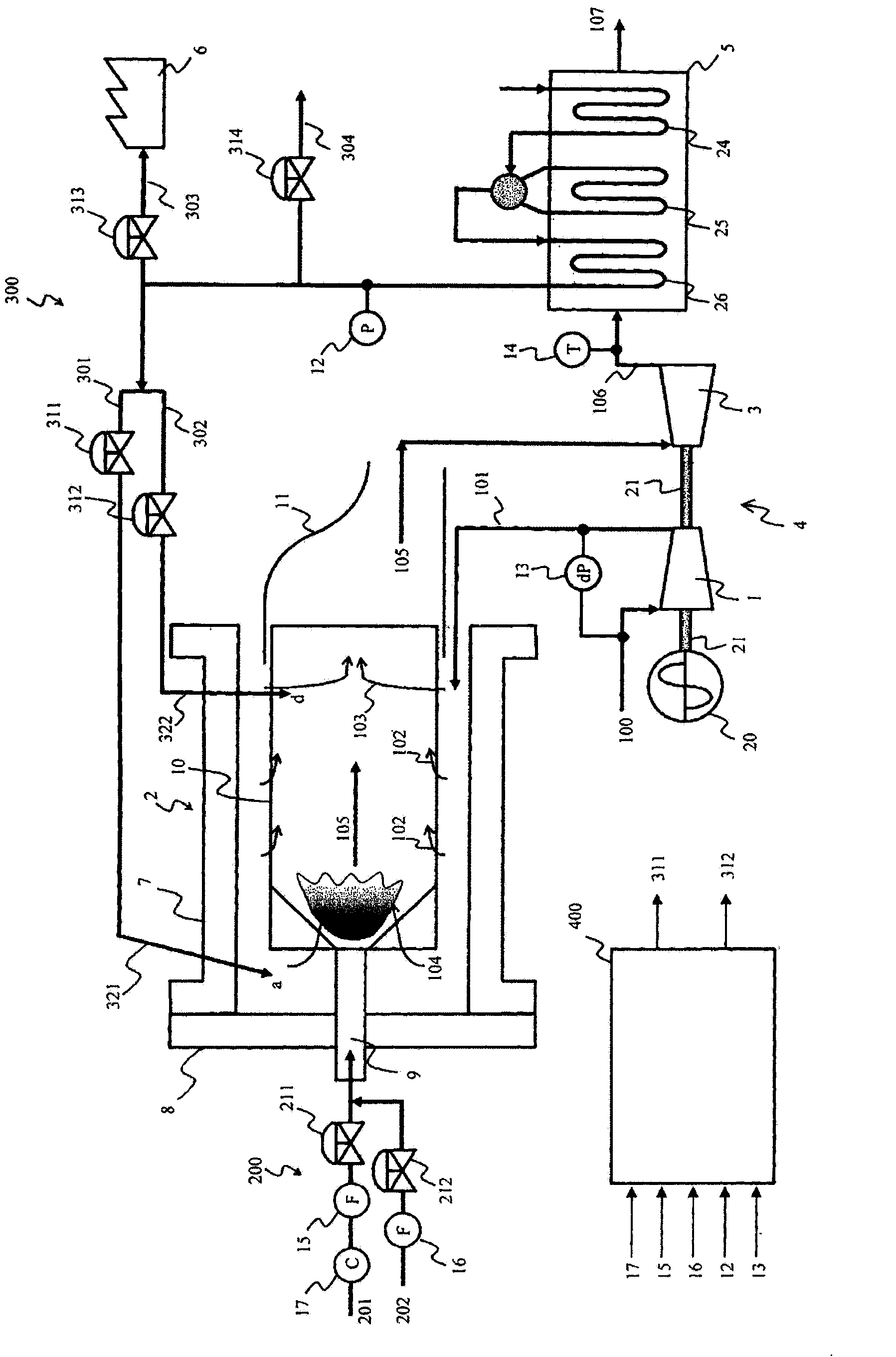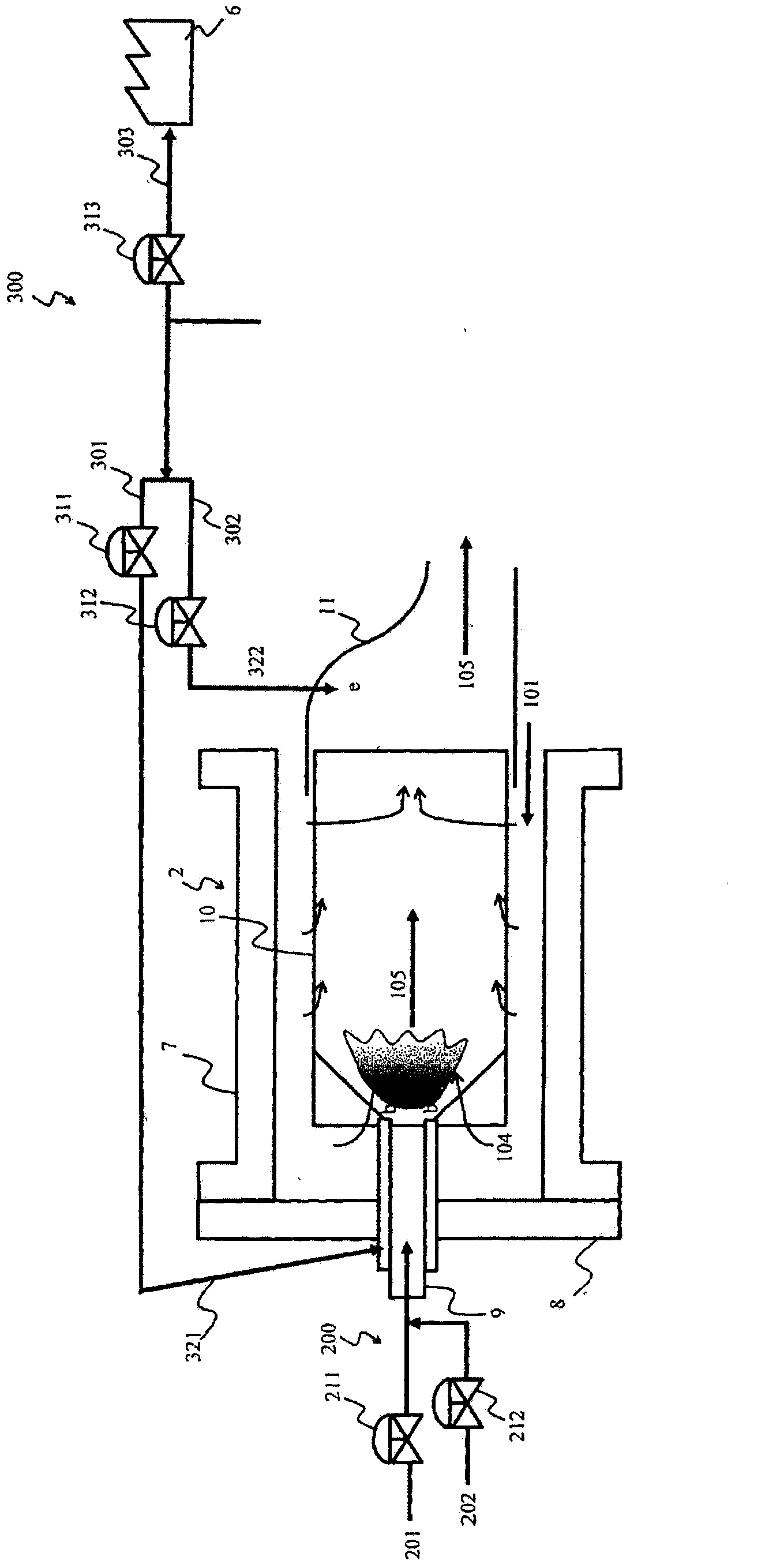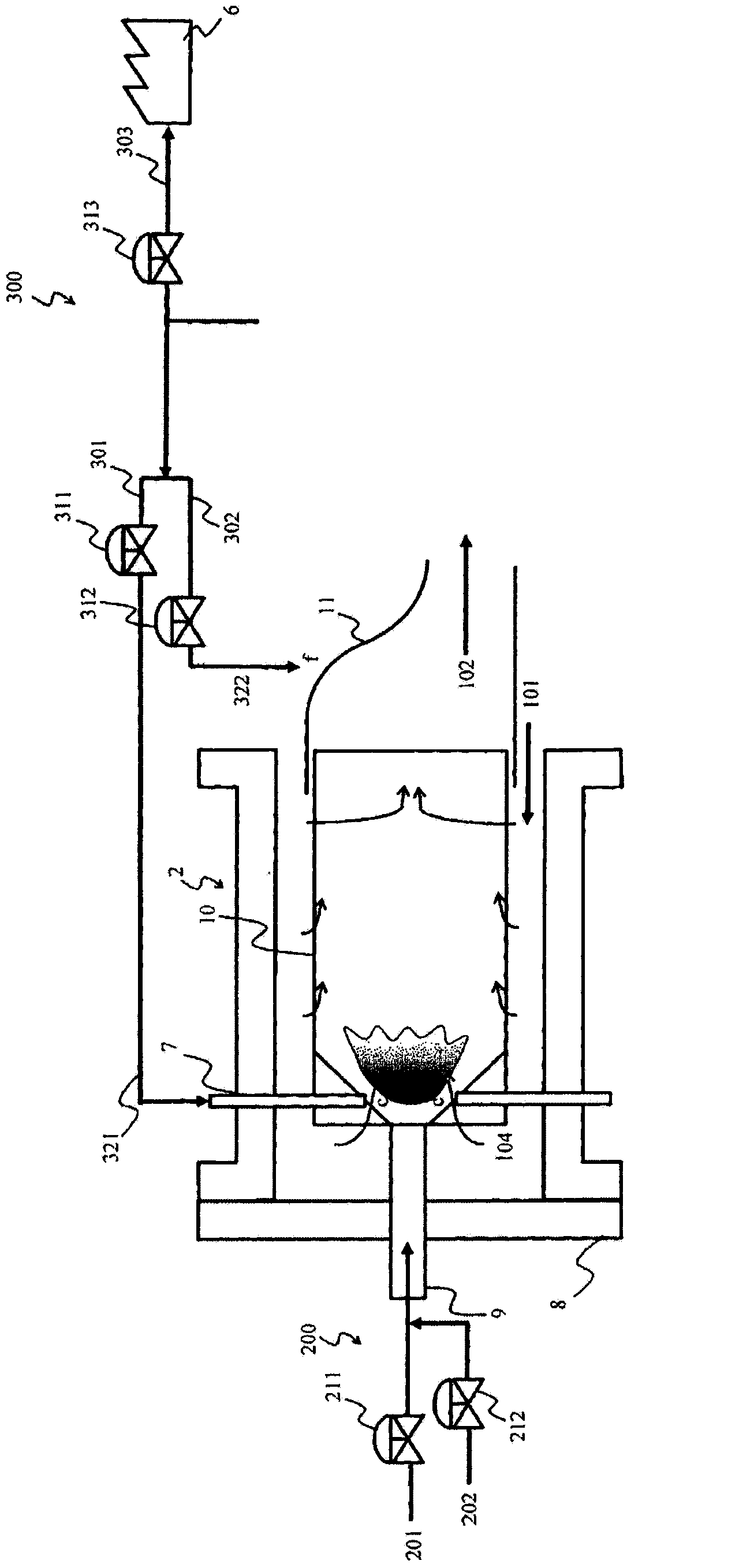Variable Heat/power Ratio Cogeneration System
A variable heat and power cogeneration technology, applied in the charging system, turbine/propellant fuel delivery system, energy industry, etc., can solve the problems of flame disappearance, control delay and increase of NOx emission, etc., to ensure combustion stability, NOx little effect
- Summary
- Abstract
- Description
- Claims
- Application Information
AI Technical Summary
Problems solved by technology
Method used
Image
Examples
Embodiment 1)
[0075] figure 1 It is a system flowchart showing an example of the configuration of the first embodiment of the heat-to-electricity ratio variable cogeneration system of the present invention. Such as figure 1 As shown, the variable heat-to-electricity ratio cogeneration system is mainly composed of a gas turbine 4 , a waste heat boiler 5 , a generator 20 , and a steam supply system 300 .
[0076] The gas turbine 4 includes a compressor 1 that compresses air 100 to generate high-pressure combustion air; a combustor 2 that combusts compressed air 101 introduced from the compressor 1 and fuel from a fuel system 200 to generate combustion gas 105; and a turbine. 3. It introduces the combustion gas 105 generated by the burner 2 . The rotary shaft of the compressor 1 and the rotary shaft of the turbine 3 are connected by a shaft 21 . In addition, the rotary shaft of the generator 20 driven by the gas turbine 4 to generate electricity is also connected to the rotary shaft of the ...
Embodiment 2)
[0144] A second embodiment of the heat-to-electricity ratio variable cogeneration system of the present invention will be described below using the drawings. Figure 8 It is a system flowchart which shows an example of the structure of the 2nd embodiment of the heat-to-electricity ratio variable cogeneration system of this invention. Figure 8 in, with Figure 1 to Figure 7 The parts shown with the same symbols are the same parts, so detailed description thereof will be omitted.
[0145] Figure 8 The shown second embodiment of the heat-to-electricity ratio variable cogeneration system of the present invention is composed of substantially the same equipment as that of the first embodiment, but differs in the following configurations. In the present embodiment, a regenerator 27 using the low-pressure gas turbine exhaust gas 106 from the turbine 3 as a heat source is provided upstream of the waste heat boiler 5 . The compressed air 101 compressed by the compressor 1 is drawn ...
PUM
 Login to View More
Login to View More Abstract
Description
Claims
Application Information
 Login to View More
Login to View More - R&D
- Intellectual Property
- Life Sciences
- Materials
- Tech Scout
- Unparalleled Data Quality
- Higher Quality Content
- 60% Fewer Hallucinations
Browse by: Latest US Patents, China's latest patents, Technical Efficacy Thesaurus, Application Domain, Technology Topic, Popular Technical Reports.
© 2025 PatSnap. All rights reserved.Legal|Privacy policy|Modern Slavery Act Transparency Statement|Sitemap|About US| Contact US: help@patsnap.com



